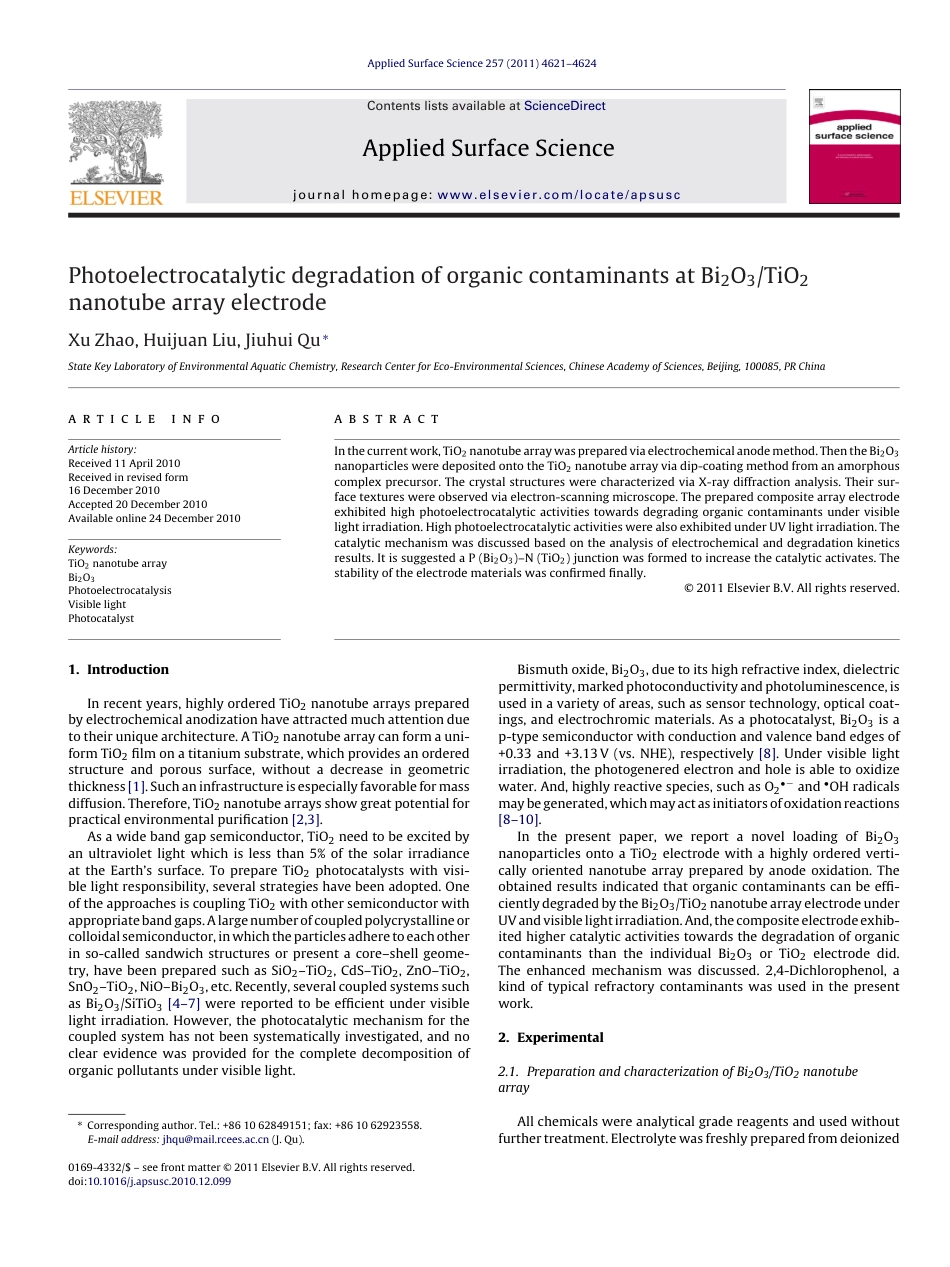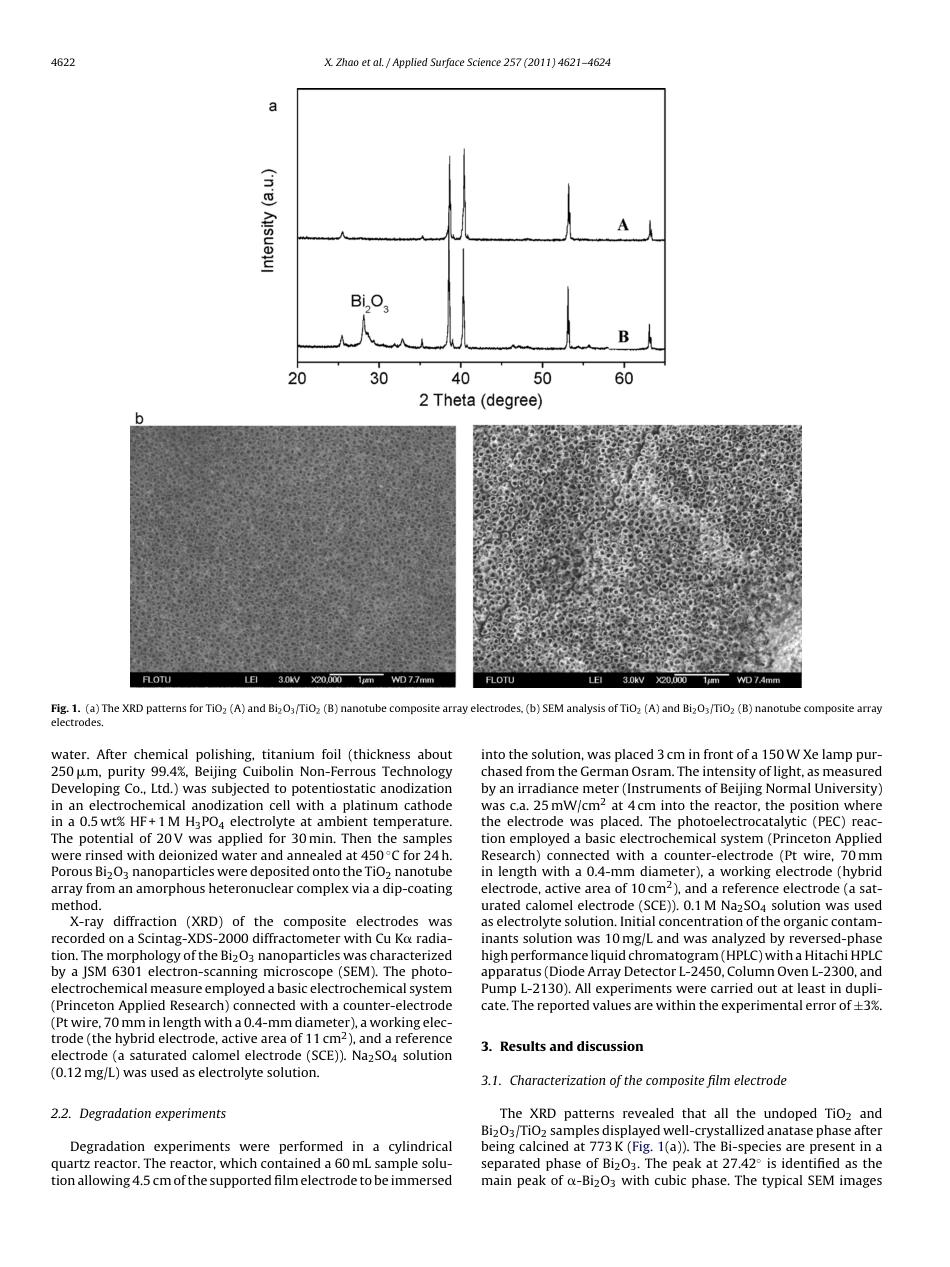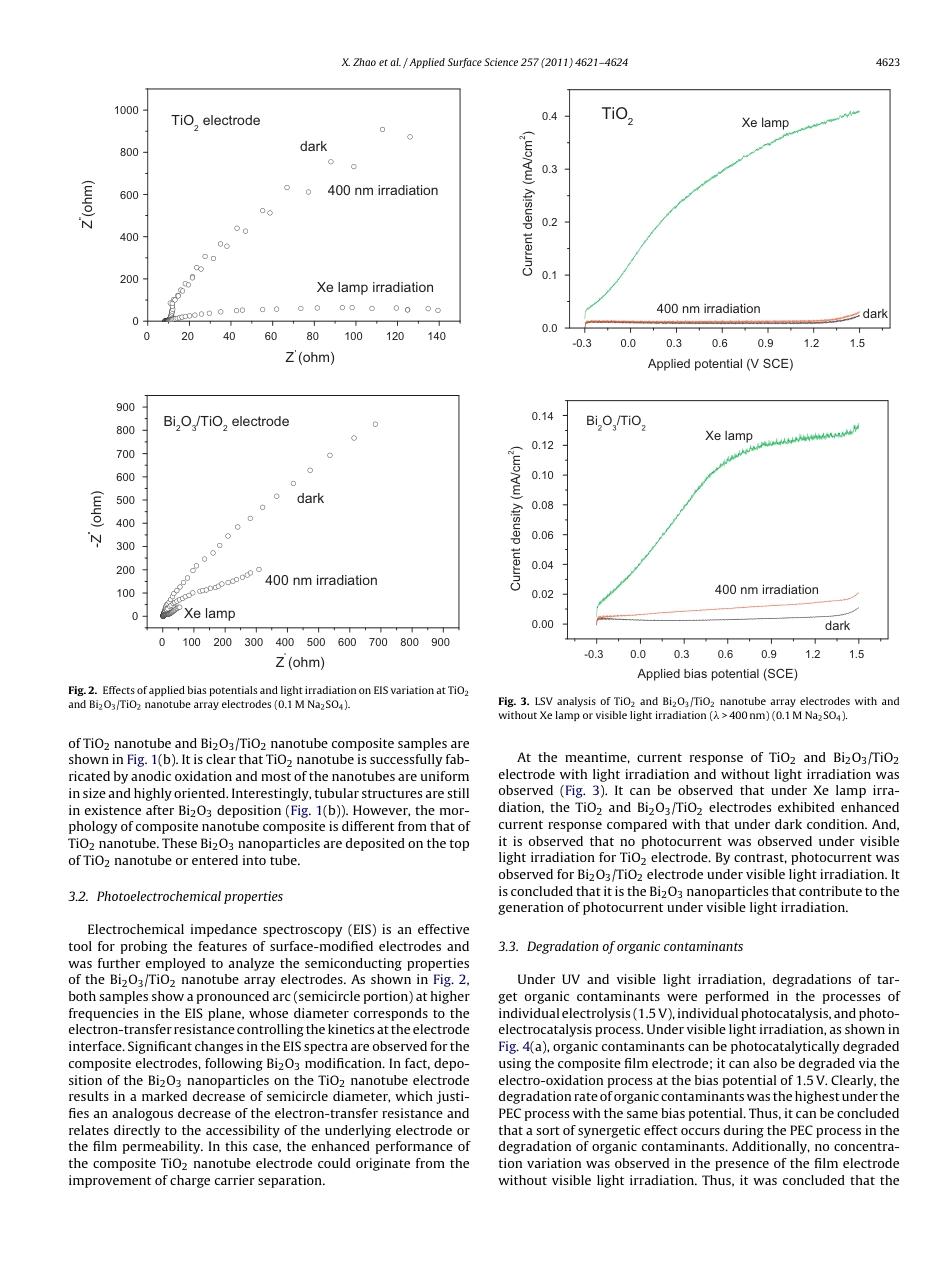Applied Surface Science 257 (2011) 4621–4624Contents lists available at ScienceDirectApplied Surface Sciencejournal homepage: www.elsevier.com/locate/apsuscPhotoelectrocatalytic degradation of organic contaminants at Bi2O3/TiO2nanotube array electrodeXu Zhao, Huijuan Liu, Jiuhui Qu ∗State Key Laboratory of Environmental Aquatic Chemistry, Research Center for Eco-Environmental Sciences, Chinese Academy of Sciences, Beijing, 100085, PR Chinaa r t i c l ei n f oArticle history:Received 11 April 2010Received in revised form16 December 2010Accepted 20 December 2010Available online 24 December 2010Keywords:TiO2 nanotube arrayBi2O3PhotoelectrocatalysisVisible lightPhotocatalysta b s t r a c tIn the current work, TiO2 nanotube array was prepared via electrochemical anode method. Then the Bi2O3nanoparticles were deposited onto the TiO2 nanotube array via dip-coating method from an amorphouscomplex precursor. The crystal structures were characterized via X-ray diffraction analysis. Their sur-face textures were observed via electron-scanning microscope. The prepared composite array electrodeexhibited high photoelectrocatalytic activities towards degrading organic contaminants under visiblelight irradiation. High photoelectrocatalytic activities were also exhibited under UV light irradiation. Thecatalytic mechanism was discussed based on the analysis of electrochemical and degradation kineticsresults. It is suggested a P (Bi2O3)–N (TiO2) junction was formed to increase the catalytic activates. Thestability of the electrode materials was confirmed finally.© 2011 Elsevier B.V. All rights reserved.1. IntroductionIn recent years, highly ordered TiO2 nanotube arrays preparedby electrochemical anodization have attracted much attention dueto their unique architecture....



